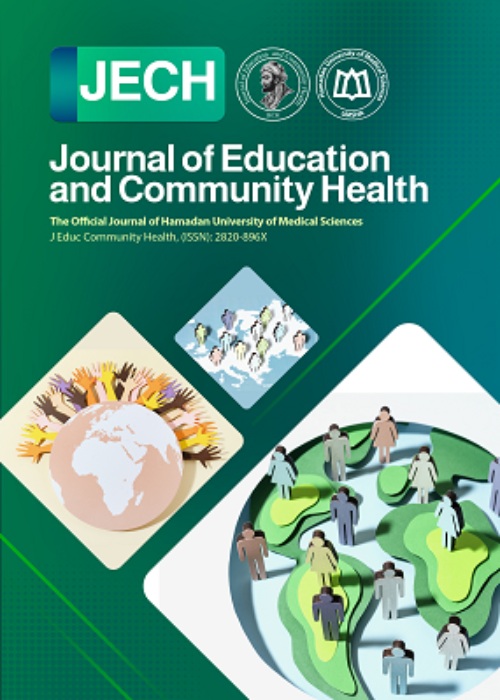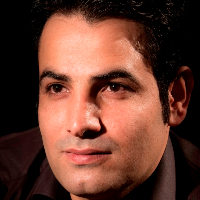Multi-Theory Model for Changing Health Behavior: Evolutionary Process and Strengths and Weak Points
Author(s):
Article Type:
Research/Original Article (دارای رتبه معتبر)
Abstract:
Dear Editor,
Generally, in health education and health promotion, theories with characteristics such as the relationship with health behaviors, adequate prognostic power, the existence of empirical evidence of change in behavior, the availability of finite and flexible structures, the ability to change the immediate and long-term behavior at individual, group, and social levels that can be applied in all cultures are used [1]. Sharma suggested a Multi-theory Model (MTM) for changing health behavior in 2015 that fits these criteria. This model refers to the prediction of short-term and long-term changes in health behavior and can be implemented on an individual, group, and community level. The theory divides behavior change into two components, including initiation and sustenance. There are 3 constructs for initiation of behavior change: 1) participatory dialogue, in which advantages of behavior change must be more important than disadvantages; 2) behavioral confidence, which is the futuristic confidence in one’s ability to perform a behavior change and is sourced not just in the self but may also be external to self, such as powerful others or God; and 3) changes in physical environment such as access, readiness, and handiness of resources that tangibly help with behavior change.
For sustenance of behavior change, 3 constructs have been proposed: 1) emotional transformation, which is the ability to convert feelings into goals for behavior change; 2) practice for change, which entails constantly thinking about behavior change, making mid-term corrections to one’s strategy, overcoming barriers, and remaining focused on health behavior change; and 3) changes in social environment, which includes creating social support that helps with behavior change [2].
According to studies conducted by Sharma, health education models such as Health Belief Model (HBM), the Social Cognitive Theory (SCT) the PRECEDE-PROCEED model, and others do not maintain the behavior, do not have a consistent predictive power, effect change primarily at the individual level, and are very comprehensive, impractical, and not parsimonious, and they often explain behavior [3-6].
There appears to be some points or criticisms associated with the MTM, for example, the constructs of this model have been separately tested in different studies, but these constructs have not been studied coherently and in the form of a model (MTM) in interventional studies [2]. The MTM seems to only address the second and third levels of behavior prevention. For example, in the field of training negative behaviors such as alcohol and drug abuse, the model's vision is to leave such behaviors rather than not doing them (primary prevention). MTM has also a comprehensive vision at the construct of changes in the physical environment (access, readiness, and handiness of resources), which, like the PRECEDE-PROCESS model, presents this construct impractical, contrary to the claims of model providers. The MTM takes a linear approach to two steps of initiation and maintenance. The linearity process of the model does not allow a person to return to the process of changing behavior in the event of a failure in the onset or continuation of behavior. Given that the relapse phenomenon occurs in most health behaviors [7], it is recommended to consider the relapse path, i.e. the return of the individual to the previous stage (for example, from maintenance to start). However, this model is still evolving, and researchers in the future will have to take some suggestions to improve this model. It seems that in the initiation of behavior change, behavioral confidence, participatory dialogue, and changes in the physical environment can be considered as important predisposing, reinforcing, and potentials factors, respectively. Similarly, in the sustenance model, emotional transformation, practice for change, and changes in social environment are considered as important predisposing, reinforcing, and potentials factors, respectively [5]. In the future, researchers will also need to test and further promote this model with the development of empirical experimental studies and comparative studies of this model with other models.
Generally, in health education and health promotion, theories with characteristics such as the relationship with health behaviors, adequate prognostic power, the existence of empirical evidence of change in behavior, the availability of finite and flexible structures, the ability to change the immediate and long-term behavior at individual, group, and social levels that can be applied in all cultures are used [1]. Sharma suggested a Multi-theory Model (MTM) for changing health behavior in 2015 that fits these criteria. This model refers to the prediction of short-term and long-term changes in health behavior and can be implemented on an individual, group, and community level. The theory divides behavior change into two components, including initiation and sustenance. There are 3 constructs for initiation of behavior change: 1) participatory dialogue, in which advantages of behavior change must be more important than disadvantages; 2) behavioral confidence, which is the futuristic confidence in one’s ability to perform a behavior change and is sourced not just in the self but may also be external to self, such as powerful others or God; and 3) changes in physical environment such as access, readiness, and handiness of resources that tangibly help with behavior change.
For sustenance of behavior change, 3 constructs have been proposed: 1) emotional transformation, which is the ability to convert feelings into goals for behavior change; 2) practice for change, which entails constantly thinking about behavior change, making mid-term corrections to one’s strategy, overcoming barriers, and remaining focused on health behavior change; and 3) changes in social environment, which includes creating social support that helps with behavior change [2].
According to studies conducted by Sharma, health education models such as Health Belief Model (HBM), the Social Cognitive Theory (SCT) the PRECEDE-PROCEED model, and others do not maintain the behavior, do not have a consistent predictive power, effect change primarily at the individual level, and are very comprehensive, impractical, and not parsimonious, and they often explain behavior [3-6].
There appears to be some points or criticisms associated with the MTM, for example, the constructs of this model have been separately tested in different studies, but these constructs have not been studied coherently and in the form of a model (MTM) in interventional studies [2]. The MTM seems to only address the second and third levels of behavior prevention. For example, in the field of training negative behaviors such as alcohol and drug abuse, the model's vision is to leave such behaviors rather than not doing them (primary prevention). MTM has also a comprehensive vision at the construct of changes in the physical environment (access, readiness, and handiness of resources), which, like the PRECEDE-PROCESS model, presents this construct impractical, contrary to the claims of model providers. The MTM takes a linear approach to two steps of initiation and maintenance. The linearity process of the model does not allow a person to return to the process of changing behavior in the event of a failure in the onset or continuation of behavior. Given that the relapse phenomenon occurs in most health behaviors [7], it is recommended to consider the relapse path, i.e. the return of the individual to the previous stage (for example, from maintenance to start). However, this model is still evolving, and researchers in the future will have to take some suggestions to improve this model. It seems that in the initiation of behavior change, behavioral confidence, participatory dialogue, and changes in the physical environment can be considered as important predisposing, reinforcing, and potentials factors, respectively. Similarly, in the sustenance model, emotional transformation, practice for change, and changes in social environment are considered as important predisposing, reinforcing, and potentials factors, respectively [5]. In the future, researchers will also need to test and further promote this model with the development of empirical experimental studies and comparative studies of this model with other models.
Keywords:
Language:
Persian
Published:
Journal of Education and Community Health, Volume:6 Issue: 1, 2019
Pages:
1 to 2
magiran.com/p1981359
دانلود و مطالعه متن این مقاله با یکی از روشهای زیر امکان پذیر است:
اشتراک شخصی
با عضویت و پرداخت آنلاین حق اشتراک یکساله به مبلغ 1,390,000ريال میتوانید 70 عنوان مطلب دانلود کنید!
اشتراک سازمانی
به کتابخانه دانشگاه یا محل کار خود پیشنهاد کنید تا اشتراک سازمانی این پایگاه را برای دسترسی نامحدود همه کاربران به متن مطالب تهیه نمایند!
توجه!
- حق عضویت دریافتی صرف حمایت از نشریات عضو و نگهداری، تکمیل و توسعه مگیران میشود.
- پرداخت حق اشتراک و دانلود مقالات اجازه بازنشر آن در سایر رسانههای چاپی و دیجیتال را به کاربر نمیدهد.
In order to view content subscription is required
Personal subscription
Subscribe magiran.com for 70 € euros via PayPal and download 70 articles during a year.
Organization subscription
Please contact us to subscribe your university or library for unlimited access!




